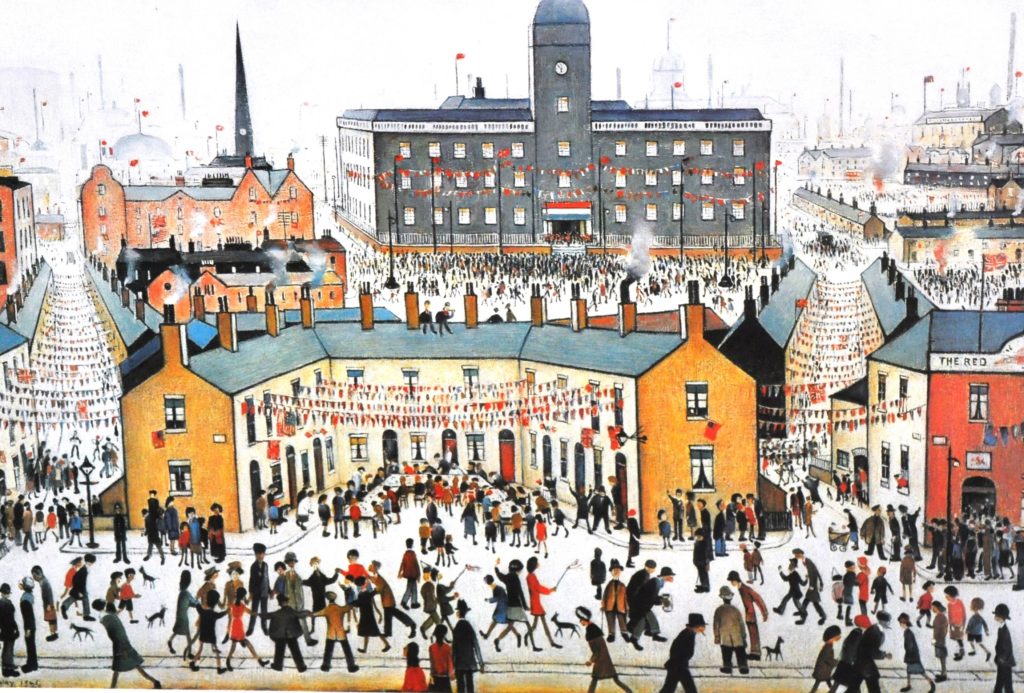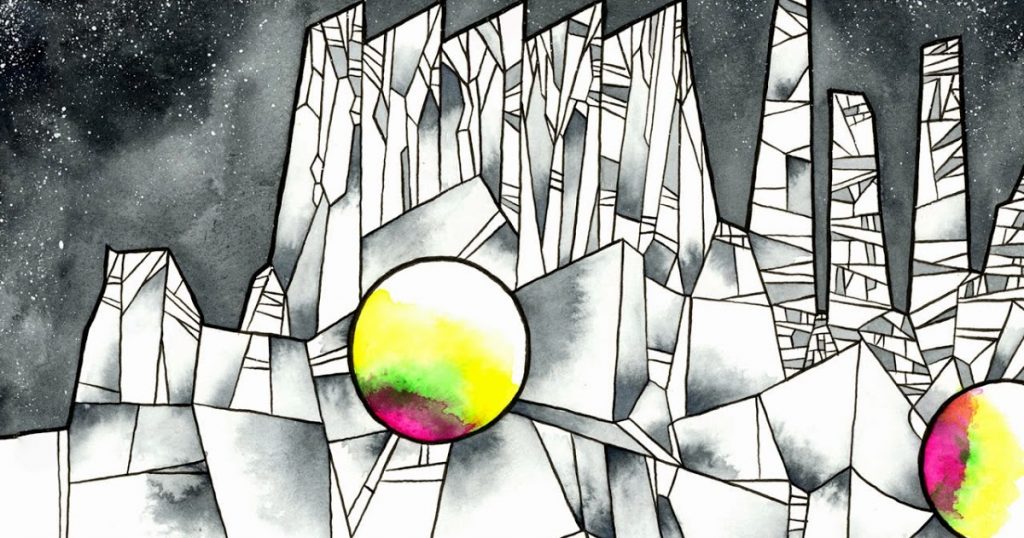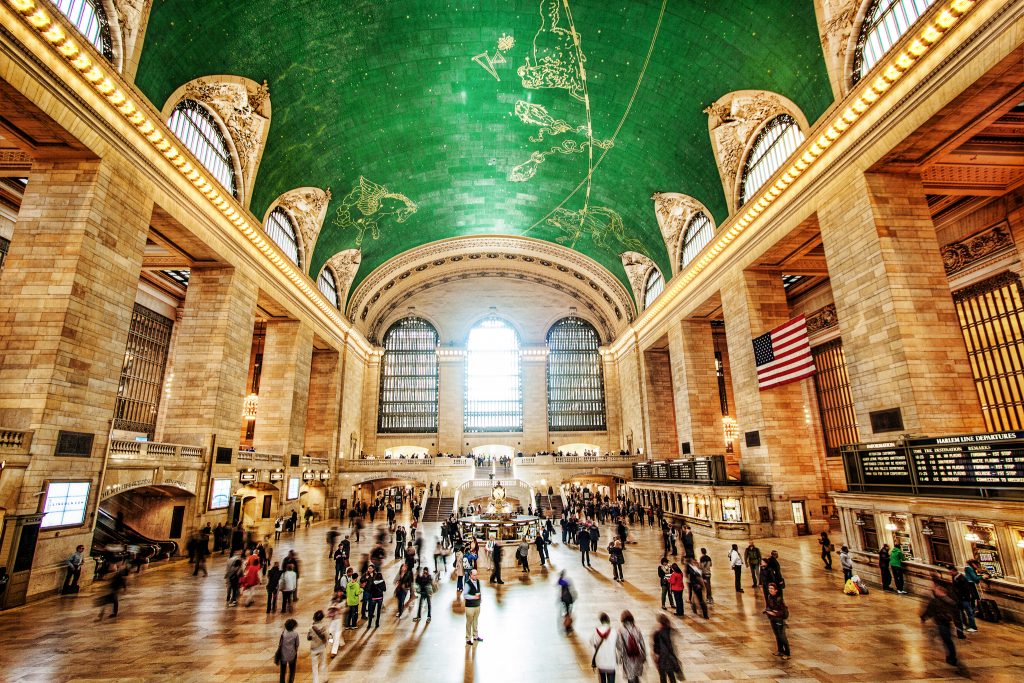Confess What You Are Smuggling
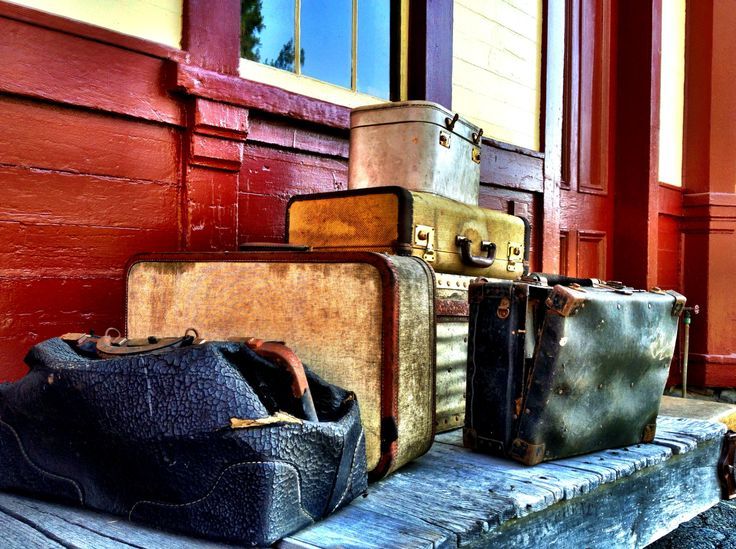
I leave tomorrow morning for the next Advanced Practitioners Program retreat at Spirit Rock followed by the first Nine Bodies Teacher Training retreat. I return on Thanksgiving Day, so most likely I won’t post again until December.
In my absence, I leave you with this excerpt from Invisible Cities by Italo Calvino, which is my all-time favorite guidebook for those about to travel:
“…So then, yours is truly a journey through memory!” The Great Khan, his ears always sharp, sat up in his hammock every time he caught a sigh in Marco’s speech. “It was to slough off a burden of nostalgia that you went so far away!” he exclaimed, or else: “You return from your voyages with a cargo of regrets!” And he added, sarcastically: “Meager purchases, to tell the truth, for a merchant of the Serenissima!”
This was the target of all Kublai’s questions about the past and the future. For an hour he had been toying with it, like a cat with a mouse, and finally he had Marco with his back to the wall, attacking him, putting a knee on his chest, seizing him by the beard: “This is what I wanted to hear from you: you confess what you are smuggling: moods, stages of grace, elegies!”
These words and actions were perhaps only imagined, as the two, silent and motionless, watched the smoke rise slowly from their pipes. The cloud dissolved at times in a wisp of wind, or else remained suspended in mid-air; and the answer was in that cloud. As the puff carried the smoke away, Marco thought of the mists that clouded the expanse of the sea and the mountain ranges and, when dispelled, leave the air dry and diaphanous, revealing distant cities. It was beyond that screen of fickle humors that his gaze wished to arrive: the form of things can be discerned better at a distance.
Or else the cloud hovered, having barely left the lips, dense and slow, and suggested another vision: the exhalations that hang over the roofs of the metropolises, the opaque smoke that is scattered, the hood of miasmata that weights over the bituminous streets. Not the labile mists of memory nor the the dry transparence, but the charring of burned lives that forms a scab on the city, the sponge swollen with vital matter that no longer floats, the jam of past, present, future that blocks existences calcified in the illusion of movement: this is what you would find at the end of your journey.
Toward Which My Journey Tends
I leave on Tuesday (May 29) for the Nine Bodies retreat at Spirit Rock, then I’m staying over to meet with Phillip the next day, so I won’t get back until the following Tuesday, (June 5). Look for my next post sometime later that week.
In the mean time, I leave you with this selection from Invisible Cities, by Italo Calvino, the guide book I always consult before traveling:
The Great Khan’s atlas contains also the maps of the promised lands visited in thought but not yet discovered or founded: New Atlantis, Utopia, the City of the Sun, Oceana, Tamoé, New Harmony, New Lanark, Icaria.
Kublai asked Marco: “You, who go about exploring and who see signs, can tell me toward which of these futures the favoring winds are driving us.”
“For these ports I could not draw a route on the map or set a date for the landing. At times all I need is a brief glimpse, an opening in the midst of an incongruous landscape, a glint of lights in the fog, the dialogue of two passersby meeting in the crowd, and I think that, setting out from there, I will put together, piece by piece, the perfect city, made of fragments mixed with the rest, of instants separated by intervals, of signals one sends out, not knowing who receives them. If I tell you that the city toward which my journey tends is discontinuous in space and time, now scattered, now more condensed, you must not believe the search for it can stop. Perhaps while we speak, it is rising, scattered, within the confines of your empire; you can hunt for it, but only in the way I have said.”
Already the Great Khan was leafing through his atlas, over the maps of the cities that menace in nightmares and maledictions: Enoch, Babylon, Yahooland, Butua, Brave New World.
He said: “It is all useless, if the last landing place can only be the infernal city, and it is there that, in ever-narrowing circles, the current is drawing us.”
And Polo said: “The inferno of the living is not something that will be; if there is one, it is what is already here, the inferno where we live every day, that we form by being together. There are two ways to escape suffering it. The first is easy for many: accept the inferno and become such a part of it that you can no longer see it. The second is risky and demands constant vigilance and apprehension: seek and learn to recognize who and what, in the midst of the inferno, are not inferno, then make them endure, give them space.”
What Opens Before Me
 Sorry for not posting yesterday, but there was a lot going on, both internally and externally (as they say).
Sorry for not posting yesterday, but there was a lot going on, both internally and externally (as they say).
And now I won’t be posting again until Wednesday because I’m flying to San Francisco tomorrow to meet with my teacher, Phillip Moffitt, and to visit with my dear, sweet, wonderful, and so amazingly generous (!!!) dharma friends, Maggie and Tony, who are not only picking me up at the airport and hosting me at their house, but are also driving me all the way to Phillip’s office in Tiburon and back. (I love you guys!)
So now, in keeping with my pre-flight ritual of reflecting on the nature of travel as I am about to embark, I offer this selection from Invisible Cities by Italo Calvino:
Cities & Desire 1
There are two ways of describing the city of Dorothea: you can say that four aluminum towers rise from its walls flanking seven gates with spring-operated drawbridges that span the moat whose water feeds four green canals which cross the city, dividing it into nine quarters, each with three hundred houses and seven hundred chimneys.
And bearing in mind that the nubile girts of each quarter marry youths of other quarters and their parents exchange the goods that each family holds in monopoly–bergamot, sturgeon roe, astrolabes, amethysts–you can then work from these facts until you learn everything you wish about the city in the past, present, and future.
Or else you can say, like the camel driver who took me there: “I arrived here in my first youth, one morning, many people were hurrying along the streets toward the market, the women had fine teeth and looked you straight in the eye, three soldiers on a platform played the trumpet, and all around wheels turned and colored banners fluttered in the wind.
“Before then I had known only the desert and the caravan routes. In the years that followed, my eyes returned to contemplate the desert expanses and the caravan routes; but now I know this path is only one of the many that opened before me on that morning in Dorothea.”
Contemplating with Fascination
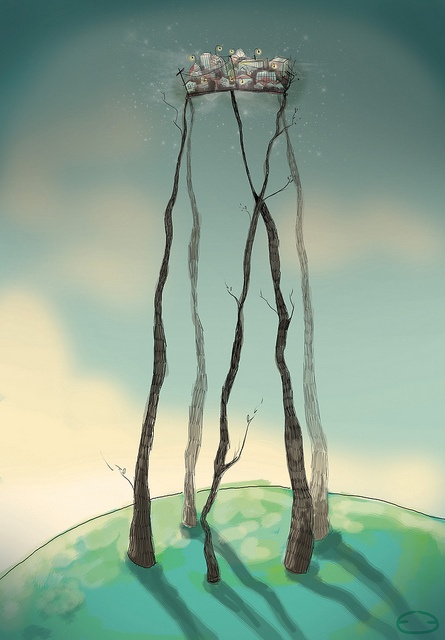 In honor of Earth Day (tomorrow) and in support of the March for Science scheduled to celebrate the occasion on the National Mall, I offer this selection from Invisible Cities, by Italo Calvino, (which I always consult before leaving home, as I am about to do, to complete the final segment of the Community Dharma Leader training program):
In honor of Earth Day (tomorrow) and in support of the March for Science scheduled to celebrate the occasion on the National Mall, I offer this selection from Invisible Cities, by Italo Calvino, (which I always consult before leaving home, as I am about to do, to complete the final segment of the Community Dharma Leader training program):
Cities & Eyes 3
After a seven days’ march through woodland, the traveler directed toward Baucis cannot see the city and yet they have arrived. The slender stilts that rise from the ground at a great distance from one another and are lost above the clouds support the city. You climb them with ladders. On the ground the inhabitants rarely show themselves: having already everything they need up there, they prefer not to come down. Nothing of the city touches the earth except those long flamingo legs on which it rests and, when the days are sunny, a pierced, angular shadow that falls on the foliage.
There are three hypotheses about the inhabitants of Baucis: that they hate the earth; that they respect is so much they avoid all contact; that they love it as it was before they existed and with spyglasses and telescopes aimed downward they never tire of examining it, leaf by leaf, stone by stone, ant by ant, contemplating with fascination their own absence.
***
Note: In a spirit of inclusivity (heightened by my participation in the CDL program), I have changed the gender pronoun of Calvino’s traveler above from “he” to “they”.
Also note: I’ll be back in Dharma Town, ready to post again on Monday, May 1. (May Day!) Check back then.
You Already Know
I will not be posting again until after I get back from the 2-month retreat at Spirit Rock. The retreat ends on Mar 25th, but it will take me a while to get my “land legs” back. Check again on April 3.
In the mean time, I leave you (as is my custom) with a selection from my favorite guide book for travelers, Invisible Cities, by Italo Calvino.
Cities & Eyes 5
When you have forded the river, when you have crossed the mountain pass, you suddenly find before you the city of Moriana, its alabaster gates transparent in the sunlight, its coral columns supporting pediments encrusted with serpentine, its villas all of glass like aquariums where the shadows of dancing girls with silvery scales swim beneath the medusa-shaped chandeliers.
If this is not your first journey, you already know that cities like this have an obverse: you have only to walk in a semicircle and you will come into view of Moriana’s hidden face, an expanse of rusting sheet metal, sackcloth, planks bristling with spikes, pipes black with soot, piles of tin, blind walls with fading signs, frames of staved-in straw chairs, ropes good only for hanging oneself from a rotten beam.
From one part to the other, the city seems to continue, in perspective, multiplying its repertory of images: but instead it has no thickness, it consists only of a face and an obverse, like a sheet of paper, with a figure on either side, which can neither be separated nor look at each other.
On To The Next
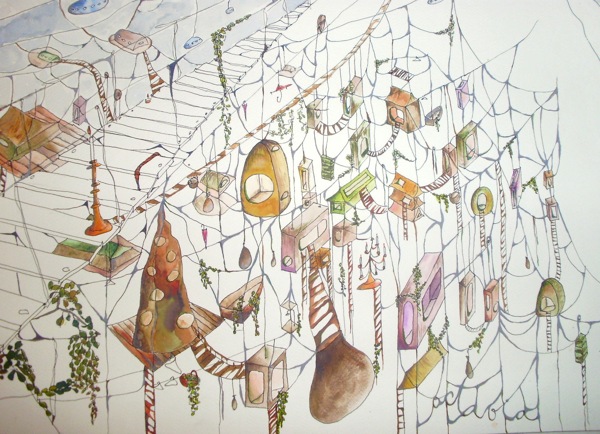 I’m feeling much better, so now I’m preparing to leave on Saturday for the next CDL training retreat. I return on the following Saturday, so check back for my next post on Monday, Oct 3.
I’m feeling much better, so now I’m preparing to leave on Saturday for the next CDL training retreat. I return on the following Saturday, so check back for my next post on Monday, Oct 3.
In the mean time, I leave you with yet another selection from my favorite guide for travelers: Invisible Cities, by Italo Calvino.
Trading Cities. 4.
In Ersilia, to establish the relationships that sustain the city’s life, the inhabitants stretch strings from the corners of the houses, white or black or gray or black-and-white according to whether they mark a relationship of blood, of trade, authority, agency. When the strings become so numerous that you can no longer pass among them, the inhabitants leave: the houses are dismantled; only the strings and their supports remain.
From a mountainside, camping with their household goods, Ersilia’s refugees look at the labyrinth of taunt strings and poles that rise in the plain. That is the city of Ersilia still, and they are nothing.
They rebuild Ersilia elsewhere. They weave a similar pattern of strings which they would like to be more complex and at the same time more regular than the other. Then they abandon it and take themselves and their houses still farther away.
Thus, when traveling in the territory of Ersilia, you come upon the ruins of the abandoned cities, without the walls which do not last, without the bones of the dead which the wind rolls away: spiderwebs of intricate relationships seeking a form.
Traveling Metta
I’ll be leaving on Saturday for a week-long CDL (Community Dharma Leader) training retreat, which will be held at Garrison Institute on the bluffs overlooking the Hudson River, about an hour north of New York City. I love going to Garrison because the trip involves a gorgeous train ride (on the Hudson River Line), starting at Grand Central Station.
Which will be the perfect place to re-start a practice I used to do whenever I was traveling. I’d look around at people in airports or in cars on the highway or wherever I’d find myself when I was going from one place to another, and I’d say to them (silently) “may you be safe” or “may you be happy” or “peaceful” or “healthy” or whatever.
Sharon Salzberg calls this “Street Lovingkindness.” She made a series of great little videos about it….including one shot in Grand Central Station! It’s very inspiring. Check it out. (click here)
Arriving
 One more prompt from the workshop: “Write about arriving.”
One more prompt from the workshop: “Write about arriving.”
Here’s what I wrote:
It’s colder here than I had expected and I’m worried that I brought all the wrong clothes. I should have brought that sweater I almost packed at the last minute, it would have been perfect, not too warm, but cozy, and it was loose, a little over-sized, so I could have worn it over anything. Even that stupid t-shirt with the Nietzsche quote in Italian — geez, that’s so pretentious, what was I thinking! I’m always buying stuff like that. I see it and I think it’s so cool and I’ve got to have it, and then I get it home and it looks so stupid. Plus it doesn’t even fit! The sleeves are too tight and the neck kind of sags. Why can’t they make t-shirts that fit? They’re always bunching up, and the hems–why do the hems always roll up at the bottom like that?
“Come back the the present moment,” the instructor says.
And then I’m back.
Where is the Border?
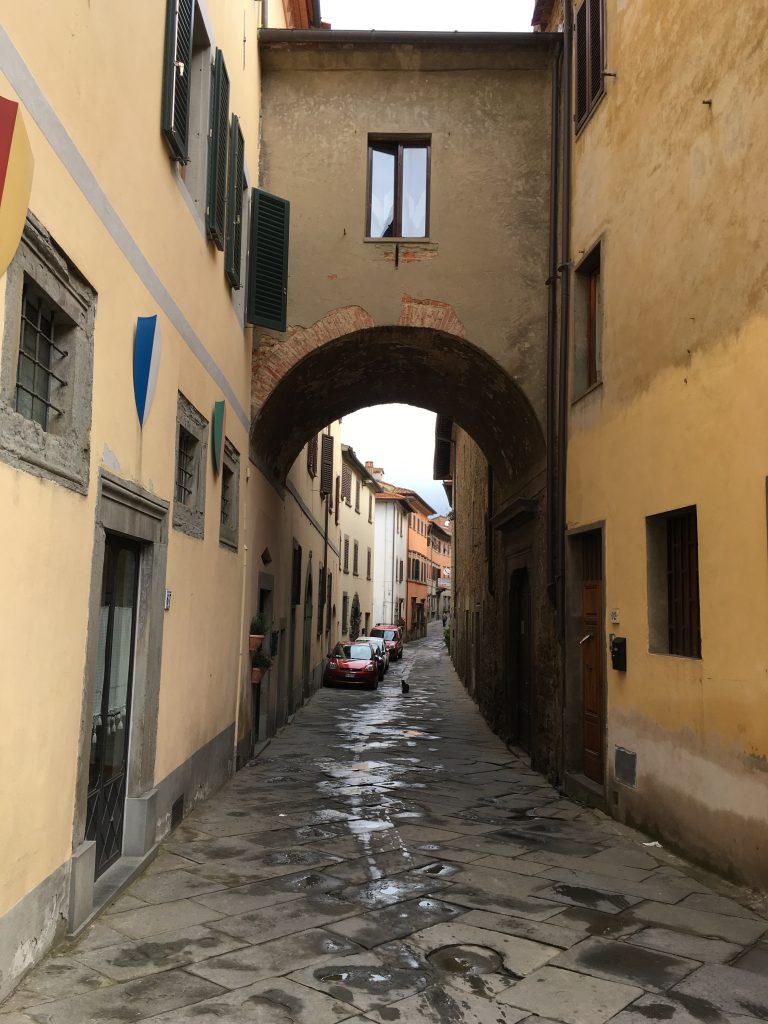 Another of the workshop prompts: “Take a walk; look around; write what you see.”
Another of the workshop prompts: “Take a walk; look around; write what you see.”
Here’s what I wrote:
The wall in the sun is warm, but the stone of the steps where I sit in the shade is cool and not exactly wet but not exactly dry either, so my thighs and my buttocks–where they rest on the stone–are becoming chilled…the warmth of my skin, of the blood rushing just below the surface, is giving itself over to the stone, is taking on the cold and the damp, an exchange no less intimate than a lingering kiss.
Is there really an “outside” and an “in”?
I don’t think so.
Where is the border between the heat of my body and the cool of the stone? Skin is porous. So is stone.
Everything is.
My pulse quickens as a car comes too close. The hairs on my arms stand erect. That car has not touched me–or maybe it has. I am changed as a result of the encounter. There are diesel fumes now in my lungs. The out-breath of combustion leaves grit on lips.
That car, too, and its driver have been touched by my presence. By the milky exhaust of my exhalation. By the dust of my skin cells I am constantly shedding. By the bite of my sweat tinged with garlic and salt.
Where is the line that marks the boundary between us? Where are the guards with their crossbars and fences?
There is no me that is not touched by you. There is no you that does not bleed into me.
***
(photo by me!)
What I’m Talking About
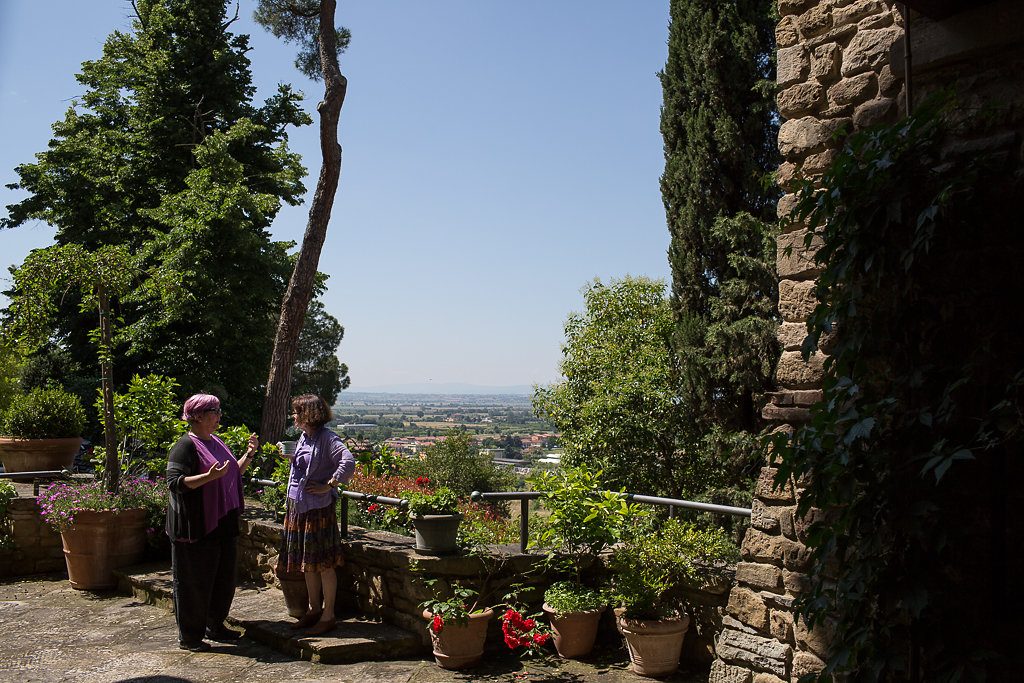 At the writing workshop there were lots of different “prompts” that we wrote from. Prompts like: “Start with the word Consequently” or “Write a dialogue between you and your ‘Muse'” or “Write a ‘Dear John’ letter using only one-syllable words.” Some of the prompts were more inspiring than others, but they were all fun.
At the writing workshop there were lots of different “prompts” that we wrote from. Prompts like: “Start with the word Consequently” or “Write a dialogue between you and your ‘Muse'” or “Write a ‘Dear John’ letter using only one-syllable words.” Some of the prompts were more inspiring than others, but they were all fun.
After a while I noticed that no matter what the prompt was, what I wrote almost always came out as some kind of Dharma talk! I’m not sure if that’s a “good” thing, but I think it says a lot about what’s on my mind…what I give my attention to…these days.
One of the prompts was: “What matters?”
Here’s what I wrote:
What matters is not the weather. Not the food. Not the language you speak. What accent. What vocabulary.
Well, OK, all of that matters in some sense. In terms of what you can or can not do. In terms of pleasant or unpleasant. Comfort. Physical ease.
But that doesn’t matter. Not really.
What matters is peace of mind.
What matters is the ability to be in any situation, any circumstances, any country or location or station in life and still be at ease.
How is this possible, you ask? Isn’t there some level of safety, of connection, of satisfaction that’s required for the mind to be at ease?
No.
Ultimately there is no security. No safety. Everything changes. There is always the unpleasant. There is always aging and sickness. And death. It is only the wanting of things to be different than they are that interferes with the peace and ease of mind I am talking about.
Pain is unpleasant. Loss is unpleasant. Disappointment is unpleasant. But it is possible to be at ease with that which is unpleasant.
It is possible.
In fact, it is necessary.
The only alternative is to always be reacting against the existence–or the possible arrival–of something unpleasant. To always be trying to hold onto whatever is pleasant–and, oh yes!, there is so much that is pleasant–but it is useless to hold on. Useless to try to have only the things that are pleasant. Useless to try to protect or defend against the loss of the pleasant.
What matters is the delight and enjoyment of whatever is pleasant, and the ability to acknowledge–to allow for the existence of–whatever is unpleasant. To respond, of course, with whatever is needed. But then to allow it all…both the pleasant and the unpleasant…to arise and pass away. As it will. As it must.
It’s only natural.
No need to fight it.
Is it not more easeful to live in accordance with that which is natural? Is there ever any use in raging against nature? Does it help to fight gravity?
So it is with the natural experience of pleasant and unpleasant. Both arise. Both pass away.
In the presence of this, there is peace.
***
(photo by Kyoko Ide)

